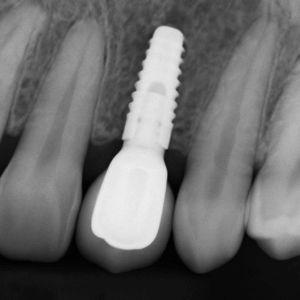Dental implants are a lasting way to replace missing teeth. They act like tooth roots, hold crowns or bridges, and feel more natural than dentures. Many patients choose implants for better chewing, a stable smile, and to prevent bone loss. This post explains the process for implants and what you can expect from the first consult to long‑term care. If you’re considering the process for implants in Wayne, NJ, this guide will walk you through each step, common risks, timelines, and questions to ask your provider.
Understanding the Basics: What Is a Dental Implant?
A dental implant has three main parts: the implant (a titanium screw placed in the jaw), the abutment (a connector), and the crown (the visible tooth). Implants replace the tooth root and support a single crown, a bridge, or a removable overdenture. Compared with bridges or dentures, implants keep bone healthy, feel more stable, and usually last longer with proper care.
Overview: The Typical Process For Implants
The process for implants generally follows four stages: consultation and planning, any preparatory procedures, implant placement surgery with healing, and final restoration plus maintenance. Below is a step‑by‑step look at each phase so you know what to expect during the process for implants in Wayne, NJ.
Consultation and Treatment Planning
During the first visit, your dentist reviews medical and dental history, checks your gums and bite, and often takes digital X‑rays and CBCT 3D images. These scans show bone width, nerve locations, and sinus position. A good plan maps implant position, size, and whether grafting or tooth removal is needed. This planning reduces surprises and helps predict outcomes.
Preparatory Procedures
If a tooth needs extraction or bone is too thin, your provider may recommend bone grafts or soft‑tissue grafting. These procedures rebuild support and can add months to the timeline while the graft heals. Grafting is common and often necessary to make the implant stable long term.
Implant Placement Surgery
Surgery usually takes 30–90 minutes per implant. Local anesthesia is typical; sedation is available for anxious patients. The implant is placed into the jaw bone and the gum is closed over or around it. You may get a temporary crown or denture if needed. Expect some swelling and mild pain for a few days; your provider will prescribe pain control and care instructions.
Healing and Osseointegration
After placement, the implant needs time to fuse with the bone—this is osseointegration. It usually takes 3–6 months or longer, depending on health and grafting. During this period, avoid hard or sticky foods on that side and follow oral hygiene guidance. Regular checkups ensure healing is on track.
Abutment and Final Restoration
Once integrated, your dentist attaches an abutment and takes impressions or digital scans for the final crown, bridge, or overdenture. Some practices offer same‑day CEREC crowns in select cases. Final restorations are color‑matched and shaped for a natural bite and appearance.
Follow-up and Long-Term Care
Routine dental visits and good home care are critical. Clean around implants daily to prevent plaque buildup. Professional cleanings and periodic X‑rays monitor bone levels and detect issues early to prevent peri‑implant disease.
Who Is a Good Candidate?
Good candidates have healthy gums, enough jawbone, and are committed to oral care. Common barriers include advanced gum disease, insufficient bone, heavy smoking, and some medical conditions like uncontrolled diabetes. Many barriers can be treated—gum therapy, smoking cessation, or bone grafting—to make implants possible.
Common Risks, Complications, and How They’re Managed
Risks include infection, implant failure, nerve irritation, or sinus issues for upper jaw implants. Choosing a trained provider, following pre‑ and post‑op instructions, and addressing gum disease lower risks. If problems arise, treatments range from antibiotics and cleaning to laser therapies or revision surgery.
Addressing Gum Disease and Peri‑Implantitis
Peri‑implantitis is bone loss around an implant caused by infection. Modern options like LANAP and LAPIP use lasers to remove infected tissue and help regenerate bone, improving odds of saving the implant. Early detection and professional care are key.
Typical Timeline and What to Expect Day‑to‑Day
Sample timeline: consult and imaging (visit 1), any extractions/grafts (weeks to months of healing), implant surgery (day), 3–6 months healing, abutment and final crown (final visits). First‑week recovery tips: use cold packs for swelling, eat soft foods, avoid heavy exercise for 48–72 hours, take prescribed meds, and keep the mouth clean with gentle rinses.
Cost Factors and Financing Options
Costs vary by number of implants, need for grafting, type of final restoration, location, and provider skill. High‑tech planning and experience can raise fees but often improve outcomes. Many dental plans offer partial coverage; financing options include third‑party medical/dental loans, in‑office payment plans, and care credit.
Why Advanced Technology Matters in the Process For Implants
Advanced tools make the process for implants in Wayne, NJ safer and more predictable. ConeBeam CT 3D imaging improves placement accuracy. CEREC same‑day crowns speed restoration. PRF therapy can boost healing. T‑Scan helps balance your bite to prevent overload. Laser protocols like LANAP and LAPIP treat gum and implant problems with less tissue damage and faster recovery. These technologies improve planning, reduce surprises, and often shorten treatment time.
How to Choose the Right Provider: Questions to Ask
– How many implants have you placed? – What implant training and continuing education do you have? – Do you use 3D CBCT imaging and digital planning? – What sedation and comfort options are available? – How do you handle grafting or failed implants? – What are your success rates and follow‑up care policies? – Do you offer financing or a warranty on restorations?
Closing: Next Steps If You’re Considering Implants
The process for implants is a multi‑step path that starts with planning and ends with a durable restoration and regular care. If you’re thinking about the process for implants in Wayne, NJ, schedule a consultation with a qualified implant dentist, bring your medical history, and prepare questions from the checklist above. A personalized plan will show timing, costs, and the best options for your smile.







